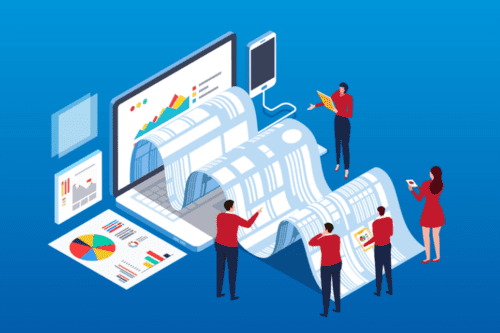Data is getting bigger every second, with research firms predicting that each person will generate at least 1.7 megabytes of data every second by 2020. So it’s no surprise that we see and hear “Big Data” everywhere today, which has now become a term that covers everything related to gathering, using, and studying data for business intelligence. Let’s discuss the rise of Big Data and where it leads.

The Rise of Big Data
The rise of big data and its entry into mainstream business coincides with the sharp incline in the usage of digital technology. With the increase in digital mediums and devices, data generation has also increased exponentially. And this sudden influx of massive data volumes from various disparate sources (social feeds, IoT sensor logs, images, videos, etc.) became something traditional business intelligence systems couldn’t keep up with. Although data warehouses are built for analytics, they favor structured data. The question then arose: what to do with this deluge of unstructured data? Data scientists addressed this need by using advanced statistical and predictive models to sift through petabytes of data in every form. However, this was done without integrating, cleaning, validating, and loading that data into a central repository.
The Future of Big Data – Our Top 3 Predictions
Big data is taking over mainstream data analytics due to its utility, and increasing support for upcoming technologies. Let’s take a look at three predictions related to big data:
1. Actionable Data will Replace Big Data
Big isn’t always better when it comes to data. Experts argue that organizations are generating too much data and using too little of it. So, big data does indeed have its merits, but what use is it if you’re analyzing data sets but are using too little of these data analytics in your decision-making? The future is about ‘actionable data’, whether it comes from big data lakes, the Enterprise Data Warehouse (EDW), or data marts. Organizations need to focus on finding out the best ways to analyze and utilize big data for effective business intelligence. Only then you’d be able to extract actionable insights from the ocean of raw data pouring in from a myriad of sources.
2. Cloud-First Strategy for Big Data Analytics will be on the Rise
Cloud has been a major contributor in the rise of big data, allowing organizations to store and process very large data sets that a typical organization couldn’t afford to do with on-premise infrastructure. More than 50% of enterprises are expected to shift to public cloud for big data analytics by the end of 2018. The shift has been relatively slow because of lingering security concerns associated with the cloud, but right now, cloud technologies have evolved to a degree where they offer equal or better security than on-premise systems. For enterprises, cloud-first strategy means greater control over costs and a higher degree of flexibility than what on-premise business intelligence software can offer.
3. Machine Learning for Data Preparation will take Center-Stage
Currently, data scientists spend 80% of their time preparing data for analysis. This is changing fast with the shift in interest towards automation in data analytics. The time taken in manual data preparation renders organizations unable to make sense of their data. In fact, numbers show that only 0.5% of data accessible to organizations is currently being analyzed and used. Machine learning is gaining ground at an unprecedented pace, especially for automating the data preparation process, while also enhancing the processing speed for predictive analysis of big data sets.
Will Big Data Replace Data Warehousing?
Unlikely.
While big data has its utility, organizations will continue to need a single source of truth for their day-to-day reporting and analysis needs. SQL remains the top query processor, and with the current wave of data warehouse automation tools, data warehousing has become agile. This counters the common argument by big data proponents, claiming data warehousing was too slow to be able to handle the current pace of data analytics requirements. Total Cost of Ownership (TCO) has also been reduced with automated data warehousing, to an extent where data lakes cost considerably more to build and are used only by a select few individuals. On the other hand, data warehouses are used by business and technical people without distinction. (Read about Distinction between data lakes, data marts, and data warehouses)
Bottom-line is, big data lakes make sense for you if you want to analyze unstructured data sources for business intelligence. In such cases, you could use data lakes in tandem with your data warehouse and data marts to maintain your single source of truth while riding the big data wave at the same time.






